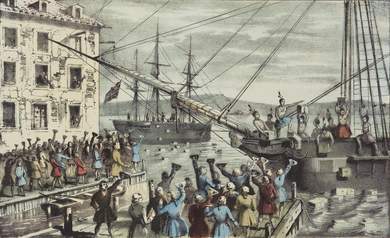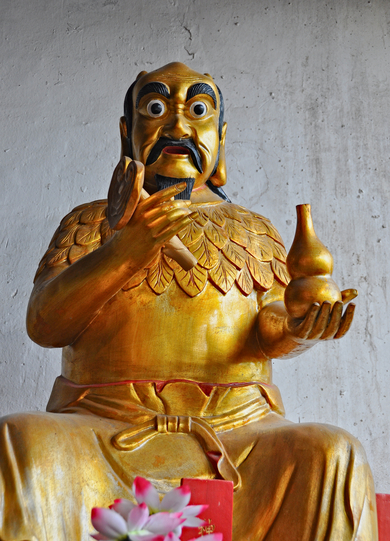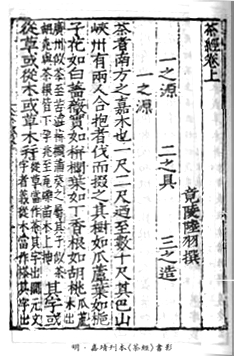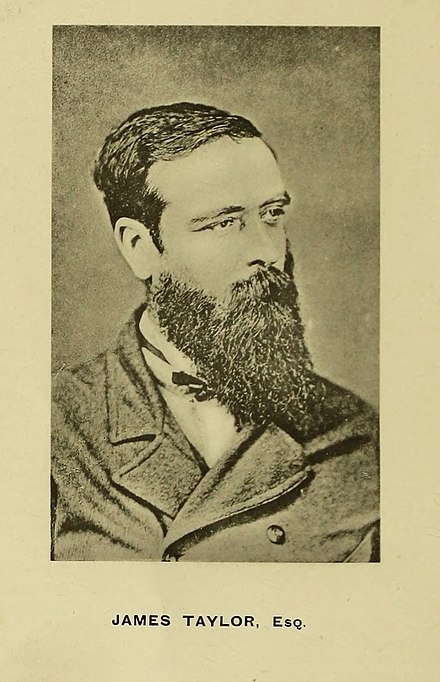
The history of tea - a timeline
Here we have selected some of the milestones in the amazing history of tea....
A mythological beginning

Shen Nong discovers the tea plant
As Emperor Shen Nong drinks hot water, some unknown leaves fall into his cup.
The intrepid and enterprising emperor bravely tries the new drink, and tea is invented! It is not clear whether
Emperor Shen Nong existed at all, as the legend says....
What is certain is that tea has been used for thousands of years in China.
The medicinal drink
First use is as medicine
The use of tea has been recorded in written sources for thousands of years. In the beginning it was a
ingredient among others, but mainly consumed for its medicinal properties.
First book on tea

Lu Yu writes "The Classic of Tea"
The first monograph (= book on a single subject) on tea was written sometime between 760 and 762.
In ten chapters, with a total of 7000 Chinese characters, Lu Yu summarizes the knowledge of the time about tea.
Tea culture takes root in Japan
The monk Eisai establishes the tea culture
Buddhist monk Myoan Eisai returns from China. He sets up tea plantations that are still there today. Tea had indeed come from China before,
but it's only now that Japanese tea culture begins to develop in earnest.
Which plant is it?
Carl Linnaeus classifies the tea plant
The world-famous botanist Carl Linnaeus suggests that tea should be called Thea Sinensis. After a few years, he changes his mind and proposes
different names for green and black tea. It was not until 1905 that things were properly organized.
Tea and free trade
Boston tea party - the spark that ignited the revolution
English tariffs anger the colonizers of North America. This leads to a protest when Bostonians
overturn three shiploads of tea in Boston harbor. It is one of the sparks that ignites the American Revolution.
The monopoly is abolished
East Indian Tea Company loses its monopoly
The East Indian Company, which had a monopoly on the tea trade for more than 100 years, loses its monopoly,
and starts looking for alternative business opportunities. Their eyes turn to present-day India.
Tea clippers
Special ships are built to carry tea
The Alexander Hall shipyard builds the first ship specifically to carry tea. It's all about getting the tea harvest home quickly.
The following year, it sails from Whampoa to Liverpool in just 107 days. The ship's owners are so pleased that they give
the captain a chronometer. The type of boat, a tea clipper, becomes a symbol of the tea trade for decades to come.
First plantation in Ceylon

James Taylor establishes first plantation
After a visit to India in 1866, Scotsman James Taylor returns to Ceylon, as Sri Lanka was known at the time. The following year, he establishes the
first tea plantation there, despite most people growing coffee. A few years later, when a disease slowly destroys the coffee crops, tea plantations expand rapidly,
and Ceylon becomes known as a tea country.
Earl Grey's Mixture
First written mention of Earl Grey
Charles Grey, the second Earl of Grey, lived between 1764 and 1845. He was a famous British politician, and one of the most important Prime Ministers.
There are some stories about how he was given a recipe for bergamot-flavored tea by a Chinese official, and recommended it to
to Queen Victoria. This is extremely unclear, as he resigned as Prime Minister in 1834, while Victoria did not become Queen until 1837, at the age of 18.
The first mention in writing is from an advertisement in 1884. However, bergamot was already used in tea
in the 1820s to disguise poor quality water....
The tea bag is invented
First patent for a tea bag
Roberta C. Lawson and Mary McLaren of Milwaukee, Wisconsin, file the first patent for a tea bag.
Surprisingly similar to a modern tea bag, it makes it easier to interrupt brewing.
En planta, ett namn
Det blir Camellia Sinensis
The International Code of Botanical Nomenclature stipulates that the name of the tea plant is Camellia sinensis (L.) O. Kunze.
The L stands for Linnaeus, while it was the pharmacist Otto Kunze who proposed the final name for the tea plant in 1881.
